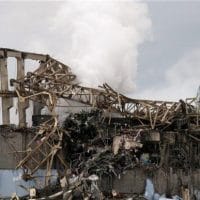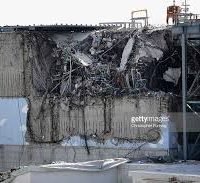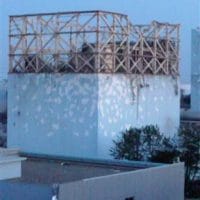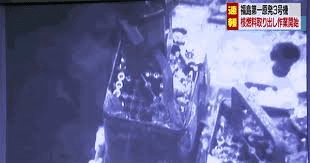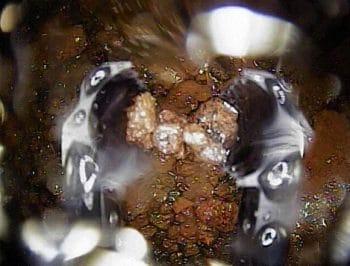An earlier version of this essay in Chinese appeared on March 11, 2020 in Caracole Community. While footnotes have been excluded from this translation since nearly all refer to Chinese sources, they can still be found in the original Chinese version. Translation by Alice Chow. —Eds.
Until March 24, despite the worldwide escalation of the COVID-19 pandemic, Japanese prime minister Shinzo Abe had insisted that the Tokyo Olympics would continue as scheduled. The Olympic flame was lit at Olympia on March 12 and arrived in Japan on March 23. On March 24, the International Olympics Committee formally announced the postponement of the Tokyo Olympics. The torch relay in Japan scheduled to start on March 26 was accordingly postponed.
The media had fluttered with discussions on whether the Olympics should be cancelled or postponed. Many regretted the setbacks that have accompanied the Tokyo Olympics from the start. There had been various scandals such as the bidding and rebidding for reconstructing the New National Stadium due to exorbitant costs, plagiarism of the Olympics logo, and bribery during Japan’s bidding for the Olympics. During this period, the Japanese authorities demonstrated its astounding incompetence in handling the Diamond Princess cruise ship, causing a sharp increase in the number of COVID-19 infected cases, with confirmed cases of over one thousand. Some people also tried to assess the economic blow that Japan may suffer in the event of cancelling or postponing the Olympics, amidst the current serious economic downturn worldwide.
It is not difficult to see why Japan was most reluctant to postpone the Olympics. Looking back, it was on July 16, 2011, that the Japan Olympics Committee initiated the bid for the 2020 Olympics, designating Tokyo as the host city. That was just four months after the earthquake, tsunami and nuclear reactor catastrophe on March 11, 2011 (3.11). In December of the same year, Japan’s House of Representatives and House of Councilors passed a resolution to fully support the bid, and one of the reasons was that it would allow Japan to look forward after suffering the catastrophe in March. In August 2013, the Japanese government sent a letter to the International Olympics Committee to reassure that the level of radioactivity in Tokyo was no different from that of Paris and London, the water in Tokyo was very safe, and 85 percent of the games would be held within eight kilometers of the Olympic Village. It stated unequivocally that the Fukushima case would not constitute any threats for Tokyo to host the Olympics. In September 2013 Japan successfully won the bid to host the game. As to why the International Olympics Committee had conveniently believed in Japan’s pledge, it was not until January 2019 when France conducted formal investigations on an alleged bribery case involving $2 million for vote-buying by the Japan Olympics Committee that the public was able to have a glimpse of the inside story.
After the 3.11 catastrophe, Fukushima badly needed reconstruction. The Japanese government should have focused on disaster relief and decontamination. Yet it has invested huge amounts of money and effort into hosting the Olympics. The publicity has heavily centered on the Olympics as a means to help the Fukushima society return to normal. Thus, other than economic consideration, the reason for hosting the Game is its consoling the spirit of the people. Right from the very beginning, the Tokyo Olympics bid and the Fukushima disaster have been bundled together.
Consequently, the Japanese government has painstakingly designed in all sorts of details the theme of Fukushima Revival through Tokyo Olympics. The J-Village National Training Center in Fukushima has been designated as the starting point of the Olympics Torch Relay in Japan. Built in 1997, J-Village was a sports training base twenty kilometers south of Fukushima Nuclear Power Plant. After the 3.11 disaster, it was redeployed as a gathering site for relief personnel dealing with the nuclear leak. Every day, thousands of people in hazmat suits and carrying Geiger counters were dispatched from the training center to the nuclear power plant. The J-village stadium served as a helipad, purifying center, temporary accommodation for factory workers, as well as parking lots for armored cars and stations for fire fighters. This year, according to plan, J-village would be attracting global attention: the Olympic flame, after the kindling ceremony in Greece on March 12, would start on the relay from J-village on March 26, with ten thousand torch bearers on the relay for 121 days, finally arriving at the opening ceremony of the Olympics at the New National Stadium.
Other so-called new opportunities to be brought to Fukushima include: holding some of the Olympic games in Fukushima such as baseball and softball to stimulate tourism and lodging, building the Olympic stadium with wood from Fukushima, using food and hydrogen energy produced in Fukushima during the games, adopting Fukushima’s local handicrafts as licensed Olympic products, and so on. These arrangements have given rise to quite a lot of criticism. The plan to provide food and beverage to Olympic athletes from countries worldwide using ingredients from Fukushima has raised concern in the international community. After the Fukushima accident, fifty-four countries and regions have put in place restrictions on import of food products from Japan. Over the course of eight years, thirty-one countries have gradually lifted the restrictions but twenty-three countries and regions, including China, South Korea, the United States, and the European Union still exercise restrictions. The Japanese government declared that since 2015 the rice produced in Fukushima no longer exceeded the safety standard for radiation. “Only fresh-water fish and wild herbs are found to have gone beyond the standard.” Prime Minister Abe declared that he himself was having Fukushima rice every day. Yet it could not pacify the public’s concern. South Korea had won the case in WTO concerning the import of Fukushima products earlier. This time, with regard to the Olympics, Korea made a strong request for the Japanese government to take responsibility and let the world understand the potential radioactive pollution issues, even stating that the Korean team would bring their own food and drinks. The environmental protection group Green Peace indicated that in a test conducted on October 26, 2019, in various districts around J-Village, including places where the torch relay would take place such as the village Iitate as well as the towns Namie and Okuma, the radiation readings were on the high side. Ground-level monitoring indicated a level as high as 71 microsieverts per hour, 1,775 times higher than that before the 3.11 accident happened in 2011. At 10 centimeters, 50 centimeters, and 1 meter above ground, the readings were 32.0 microsieverts per hour, 6.0 microsieverts per hour, and 1.7 microsieverts per hour respectively. The standard safety level for Japan as a whole is 0.23 microsieverts per hour. Green Peace believed that exposure to this level of radiation would not be fatal, yet based on the maximum radiation level of 2,000–3,000 microsieverts per hour that a person can be exposed to in a year, staying in the neighborhood of J-Village for just two days will exceed that maximum.
Of course, in a capitalist society, the consideration is not just on politics but inevitably also on economics. Abe was very clear on that, “I would like the Olympics to be the trigger that clears away deflation and economic recession.” When Abe first came to power in the hopes of stimulating the economy, he put forward a series of economy-stimulating policies, including monetary easing, proactive fiscal measures, foreign investments, and so on, which together were coined Abenomics. According to a report on May 25, 2019, published in Asahi Shimbun, the net overseas asset holdings of the Japanese government, enterprises, and individuals as at the end of 2018 came to a total of ¥341 trillion and ¥55.6 billion (around $3 trillion and $10 billion), an increase of 3.7 percent from 2017, number one in the world for twenty-eight consecutive years. For the second quarter of 2019, helped by strong enterprise investments, Japan’s gross domestic product (GDP) had grown by 1.8 percent over the previous year and 0.4 percent over the previous quarter. Yet, while growth was realized for three consecutive quarters, by the fourth quarter of 2019, annualized GDP growth rate compared to the previous quarter was negative 6.3 percent, far worse than the anticipated negative 3.7 percent, the largest decline since the last quarter of 2014.
In the face of the declining Japanese economy, the Olympics had been anticipated as lifesaving. In terms of expenditure, the budget put forward by the Japanese government at the time of bidding was $75 million, expected revenue was $2 billion. Actually, related expenses by the government included the construction of dozens of stadiums for the games, a large number of infrastructure upgrades, pollution management facilities, urban transformation, and so on. According to the statistics announced by the Japanese Board of Audit in December last year, the Japanese government had already invested ¥1.06 trillion into the Olympic Games, the Tokyo Prefecture government ¥1.41 trillion, and the Tokyo Olympics Committee ¥600 billion. That is to say, Japan had already invested a total of more than ¥3 trillion (around $27.3 billion) into the Olympics. The government deficit reached 7 percent.
In addition, according to a report by Japan’s Newsweek magazine, domestic sponsorship contracts on the Tokyo Olympics amounting to more than $3 billion had been signed, involving sixty-two Japanese enterprises. Toyota, Bridgestone and Panasonic, as global partners of the International Olympics Committee, had the highest payouts. Japan’s airline and hotel industries had also made substantial investments. Japan Airline spent $200 million to set up the budget airline ZipairTokyo, scheduled to start operation in May this year. Hotel Okura in Tokyo was reported to have spent $100 million in renovation.
In terms of anticipated revenue, the Tokyo Prefecture government estimated that the economic radiation effect brought about by the 2020 Tokyo Olympics and Paralympics, from the time of successful bidding in September 2013 to September 2030, ten years after completion of the games, would be a total economic benefit of ¥32 trillion (around $300 billion) over the seventeen-year period. Average annual GDP was estimated to go up by ¥900 billion (around $8.8 billion). As for employment, the Tokyo Prefecture estimated an increase of 1.3 million, with another 640,000 outside of Tokyo. All things considered, the Japanese government was expecting that the Olympics would provide a ten-fold economic return.
On August 21, 2016, the Olympics at Rio de Janeiro came to an end. At the closing ceremony, a video introducing Tokyo as the next hosting city was broadcasted. Shinzo Abe, attired as Super Mario from Nintendo, “came out” of the screen to appear suddenly at the Rio scene. Yet, on July 24, 2020, the Olympic flame would not flare at the Tokyo Olympics stadium because of the COVID-19 pandemic.
Although contagious disease is part of the coverage of the Tokyo 2020 insurance policy, which has cost a premium of around $300 million, BNP Paribas economist Ryutaro Kono stated that if the Tokyo Olympics were to be cancelled, the Japanese financial system would come under serious onslaughts. Other than the loss relating to tourist expenditure, there would also be a sharp increase in nonperforming debts in the tourism and property arenas. The government might have to bail out regional banks that fall into difficulties.
Looking back in history, Japan started actively striving to host the Olympics since the early 1930s in order to manifest Japan’s entrance into the rank of modern countries on the one hand, and on the other hand to demonstrate Japan’s unique oriental tradition. Back then, the Tokyo metropolitan Assembly had allocated ¥1 million (equivalent to $500,000 then) for inviting officials and athletes from various countries to visit Japan. Having been treated with enthusiastic hospitality, the chairman of the International Olympics Committee strongly supported Tokyo to host the Olympics. One of the seemingly convincing reasons was to have the Olympics held in an Asian country, to truly internationalize that spectacular event. When the International Olympics Committee voting was conducted in 1936, not only the United States, Canada, the United Kingdom, France, Germany, and Italy, but also China, India, Egypt, Iran, and so on had voted in favor of Japan. In 1937, Japan invaded China. Subsequently, in the International Olympics Committee meeting held in Cairo, even though the Chinese delegate censured Japan on the invasion, and many countries suggested boycotting Japan, Japan still stated that the Olympics would be held as planned. Their eligibility as the hosting country was not stripped of either. However, with the war going on, Japan took the initiative in 1938 to cancel the Olympics.
For the Tokyo Olympics that took place in 1964, a young man born on the day of Hiroshima nuclear bombing was selected to be the last torch bearer on the relay, to signify that Japan had stood up from the nuclear ruin. The Olympics had touched the people with the message of Hiroshima’s reconstruction. The Olympics 2020 has a similar tune. The Abe government intended to replicate the experience of Hiroshima to Fukushima.
In order to construct the image that Fukushima has “revived” and returned to normal, the Japanese government has adopted many measures to force victims to return home. Starting from March 2017, accommodation subsidies were no longer given to individuals who lived outside designated evacuation areas but chosen of their own accord to leave. In 2018, the government terminated the cleanup work except for seven municipalities.
Yet the radiation level in many places is still high and not suited for human habitation. The government then went so far as to adjust the radiation safety benchmarks. After the Fukushima accident, the Japanese government raised the acceptable radiation level for residents from 1 millisievert per year to 20 millisieverts per year. The German government had suggested that Japan change to acceptable radiation exposure level back to 1 millisievert per year, and the Japanese government had agreed to this followup work, yet that suggestion had not been implemented. In accordance with regulations, the maximum radiation exposure for workers at the nuclear power plant was 100 millisieverts in five years and 50 millisieverts in one year. Thus, the government’s policy of raising the safety level at 20 millisieverts per year amounts to putting vulnerable common citizens such as pregnant women and children at the radiation exposure level as that of nuclear power plant workers. The Japanese government has designated places with annual radiation level of 5.2 millisieverts as “radiation control zones” yet at the same time encouraged people to lead “normal” lives inside the control zones. The law stipulates that children under 18 should not engage in any activities where the radiation level is higher than 0.6 microsieverts per hour yet the present safety standard in playgrounds is six times this level.
On June 12, 2016, the Fukushima prefecture for the first time lifted the evacuation order on a “residents control zone” that had relatively high radiation level, allowing evacuees to return to their homes that had been contaminated. The evacuees were concerned about nuclear radiation and pointed out that the government had been hasty in lifting the restriction in order to promote the Tokyo Olympics.
According to reports by the Japanese media, in order to make preparation for the Tokyo Olympics, in summer of 2019, Japan for the first time brought in five rare fatal viruses: Ebola, Lassa, Marburg, Crimean-Congo and South American hemorrhagic fevers. That was the first time Japan brought in safety level 4 (BSL-4) pathogens, the most dangerous level. Further, only the National Institute of Infectious Level could reach that safety level. Relevant officials indicated that the purpose of bringing in the five viruses was to develop relevant diagnostic reagents before the Tokyo Olympics and Paralympics. Asahi Shimbun reported that up to ten thousand athletes and hundreds of thousands of visitors from more than two hundred countries were expected to be present during the Tokyo Olympics. As a precautionary measure, the Japanese Ministry of Health, Labor and Welfare believed it was necessary to strengthen the diagnostic mechanism of super-infectious diseases.
No one expected that the super-infectious disease would actually come. However, it is a novel coronavirus, with no effective cure and no clues on how to apply prevention measures.
The Japanese government was accused of downplaying the severity of COVID-19 so as to push on for the Tokyo Olympics. Yet, the situation was accelerating. On March 4, the number of confirmed cases in Japan exceeded one thousand, spread across all eight regions around the country. Of these, over three hundred were domestic cases and more than seven hundred were from the Princess Diamond Cruise Ship, as well as repatriated Japanese citizens. More than ten people have died. On February 26, there were cases in Osaka in which patients were diagnosed as cured and released from hospital, then tested positive again. The team of specialists, in discussing the situation of the epidemic, believed that the domestic situation in Japan was at its early phase and expected to grow further. On March 7, the worldwide confirmed cases of COVID-19 cases broke through 100,000. On March 9, Japan imposed entry restrictions on Chinese and Korean citizens. On March 10, China suspended visa exemption for Japanese citizens coming into China. On the same day, the Japanese government approved the state of emergency draft, giving the prime minister the power to declare a state of emergency. Despite all these, Abe stuck to continuing with the Tokyo Olympics as scheduled, until March 22 when Canada announced withdrawing from the Games, and the International Olympics Committee announced on March 24 the postponement. By March 24, the worldwide death toll of coronavirus amounted to over eighteen thousand.
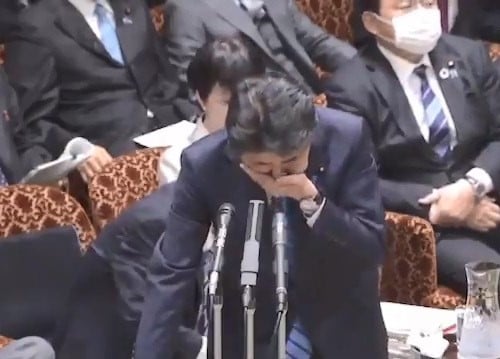
Prime Minister Shinzo Abe coughed profusely during his speech at the House of Councilors on May 3, 2020.
Impact of the Fukushima Disaster and Latest Situation
While the general focus is on the Tokyo Olympics and the COVID-19, a far more severe crisis has been shadowed: the radiation risk left behind by the Fukushima nuclear disaster. There is no way to dispose of nuclear waste and nuclear-contaminated garbage—there is no “away.” Some radioactive material can remain for hundreds of thousands of years. That is the real horror of nuclear threat. The Japanese government has intentionally manufactured the illusion of “Fukushima back to normality.” Exposing this illusion is an important cultural war.
How serious is the aftermath of the Fukushima nuclear disaster? Has the problem alleviated over the course of nine years? Has the cleanup work made substantial progress?
Radiation Contaminated Water
As reported by Jiji Press in Japan, in a meeting of a subcommittee of the Japanese Government held in August 2019, Tokyo Electric Power (TEPCO) made the projection that the radiation contaminated water from Fukushima Daiichi could only be stored for another three years maximum, meaning that the storage tanks would by 2022 be fully filled with 1.37 million tons of contaminated water. The contaminated water produced on a daily basis for cooling down the reactors is 170 tons, or 62,000 tons a year.
Ever since the problem of the contaminated water emerged in 2013, meetings have been held one after another by various sectors of Japan, yet none of the proposals worked. One proposal was to evaporate the contaminated water and release it into the atmosphere, another was to inject the contaminated water deep underground. On September 4, 2019, Japanese government officials told foreign diplomats that a decision had not been made on how to deal with the contaminated water produced from cooling down the reactors. Ultimately it may have to be released into the ocean.
The Kyodo News reported on February 18 of this year that during the process in deciding whether the contaminated water can be released into the ocean or evaporated to the sky, precipitations were found in the storage tanks of the contaminated water. From August to September of last year, TEPCO lowered a robot to the bottom of a reused storage tank to take a look, and found that there were precipitations at the bottom, similar to that found covering the bottom of the contaminated water storage tanks. Earlier, in August 2018, traces of radioactive material were found in the water that was supposed to have been purified. At that time people had denounced TEPCO for not proactively talking about it after the traces of radioactive material were found. Similarly, handling of the precipitations found last year was also nontransparent. It was reported that TEPCO simply mentioned that if precipitations were also found in other storage tanks then there might be a need to conduct investigations, and redo scale purifications before releasing the water into the ocean.
Nuclear Waste
Asahi Shimbun reported on May 25, 2019, that up to then there was at least sixteen thousand tons of nuclear waste that needed final processing, and afterwards there was expected to be ten thousand tons of nuclear garbage. Every nuclear power plant would inevitably produce highly radioactive nuclear waste. After being processed to extract radioactive elements such as plutonium, the remains that cannot be “reused” is considered nuclear garbage. The Japanese government’s nuclear waste processing program involves building a reprocessing plant for the nuclear power station’s spent nuclear fuel in Kamikita District, Aomori. It was envisaged that at full power, this reprocessing plant could annually recycle four hundred tons of “useful” material from eight hundred tons of nuclear waste, leaving four hundred tons of nuclear garbage. This reprocessing plant was planned to be completed and to start operation in the first half of 2021. Yet, due to the Japan Atomic Force Regulatory Commission’s safety audit, it is highly unlikely that it can start operation according to the original schedule.
There is one acute problem. The fuel pools’ safekeeping capacity for nuclear fuel in Japan’s various nuclear power plants is reaching a critical point. As stipulated in the Joint Convention on the Safety of Spent Fuel Management of which Japan is a party, nuclear waste should in principle be processed in the country where it originates. Consequently, the Japanese government announced in July 2017 a map of the regions where nuclear waste can be buried, which takes up 70 percent of the country’s total area. It has given rise to general concern in the entire Japan.
While there is no solution for the ultimate disposal of spent nuclear fuel, the policy of nuclear energy has been promoted for long. For this reason, nuclear power plants have been referred to as “residential buildings without toilets.” The Fukushima nuclear disaster has made this problem even more complicated.
Radioactive Solid Waste
Other than the radioactive rubbles at the earthquake site, the protective outfits and equipment used in cleanup work and subsequently disposed, and even the large quantity of contaminated soil, all have to be treated. The cleanup work on radioactive contamination in Fukushima started in 2012. The responsibility came under the central government and municipal governments. Yet in reality it was entirely delegated to large construction companies and to the civil engineering sector. Majority of the contracted companies were from outside of Fukushima. They in turn subcontracted to local small and medium size companies. Those who actually handled the cleanup work on site were workers recruited from across the country. Due to lack of experience, they could only grope along in the process, washing and stripping the contaminated surface soil, washing off the radioactive material with high pressure cleaning machines, allowing the dirty water to flow into rivers and eventually the ocean. The public criticized this practice as adding to the spread of the radioactive material. The government subsequently revised the work process, with the order to retrieve the contaminated water used in cleaning.
The radioactive rubbish such as sand and soil that arose from the cleanup is being stored in temporary sites. The locations are designated by the respective municipalities. However, the coordination process has not gone smoothly and eventually it could only be stored in “temporary” places, or “temporarily” stored on site in schools, parks or gardens of evacuated houses. The rubbish has come to a total of thirteen million cubic meters, in more than nine million black garbage bags, and being stored in 105,000 locations in Fukushima Prefecture. The plan is subsequently to move them to transit storage grounds in Okuma and Futaba, where Fukushima Daiichi Nuclear Power Plant is located. The expectation is that in thirty years’ time it would be moved to storage sites outside of Fukushima Prefecture, but the exact locations have not been determined so far.
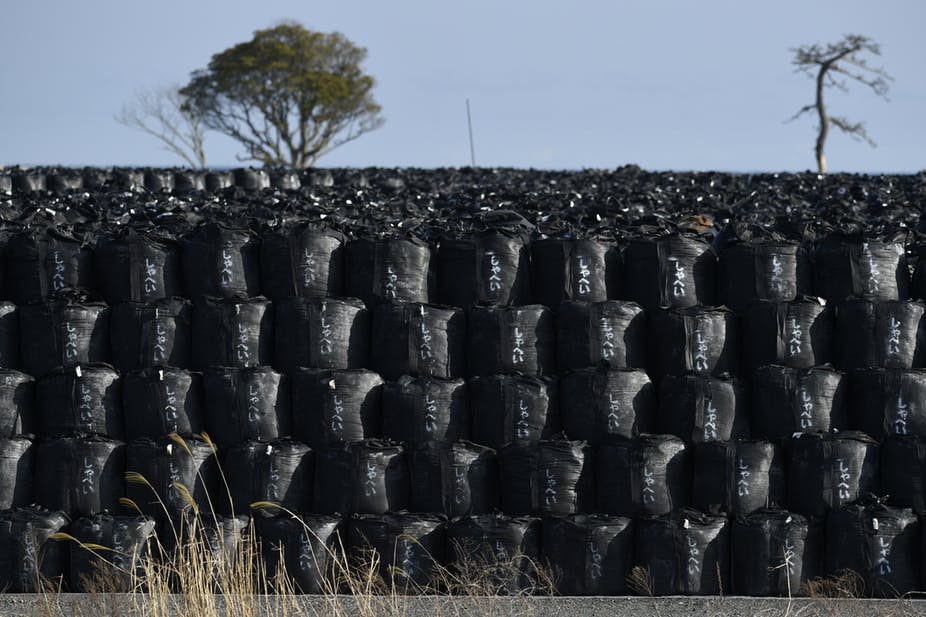
Enormous pile of plastic bags containng nuclear waste from Fukushima. To date, 9 million bags have been filled.
Simply put, the government presents a facade of operating with a plan and with constant progress, yet in reality the problem is just being procrastinated, because there are no genuine ways to handle it. The latest proposal is to reduce the radiation level of 99 percent of the contaminated soil to below 8000 Bq, then use it in farming fields and in construction of parks, highways, dams and so on. In March 2017, Iitate village used this kind of contaminated soil to fill some lowlands, then grow biofuel produce. The figure of 99 percent apparently is a comforting figure—only 1 percent of the nuclear contaminated nuclear waste need to be processed ultimately.
It is a magic number game that the government engages in with glee!
Still, the 137 tons of contaminated water, 16,000 tons of nuclear waste, and 13 million cubic meters of radioactive solid waste are minor problems compared with one other issue. The real nightmare is inside the Fukushima power plant.
1. Damage condition of the six reactor units at Fukushima nuclear power plant
The six units were put into operation in the 1970s. After the 3.11 disaster, units 1 to 4 are all in a cooled-down halted state now. Units 5 and 6 were less seriously damaged, given that the backup power sources were not destroyed, and they were scrapped in January 2014.
In units 1 to 3, the pile cores had melted. The nuclear fuel rods in the reactors’ pressure vessels, having lost the cooling mechanism, had melted down under the high temperature and fell to the bottom of the containment vessel, forming nuclear debris. Melting of the pile core means that a large quantity of nuclear fission radioactive material was released to the containment vessel of the reactor, in turn giving rise to leakage of a large quantity of radioactive material. As temperature of the fuel rods’ protective cases sharply rise, the zirconium used to make the protective cases became quickly oxidized by steam and generated a large amount of hydrogen. The fission material inside the fuel rods that was more volatile (iodine, cesium, inert gas) came out of the cracked fuel rods and came into the containment vessel. The containment vessel was subject continuously to decay heat. Temperature and pressure continued to rise. When these reached a specific level, the workers conducted a decompression process on the containment vessel in accordance with given procedures. Through periodic decompression, a complete malfunction of the containment vessel would be avoided. However, decompression of the containment vessel resulted in hydrogen and radioactive material being released into the reactor building. The hydrogen came in touch with oxygen, finally giving rise to a hydrogen explosion that released the radioactive material to the outside.
Reactor unit 4’s storage pool was damaged by the earthquake on March 15, resulting in water leaks. The fuel rods continued to generate heat, leading to temperature surge in the reactor. Chemical reactions with water occurred, releasing large quantity of hydrogen as well as high heat. The decompression valve released the hydrogen from inside the reactor’s pressure vessel out of the metal protection case, making it lose the protective function. Under the high temperature, the thinnest external containment layer finally experienced a hydrogen explosion, carving out two eight-square-meter holes in the external wall. The water storage pool where spent fuel rods were placed became exposed in the atmosphere. Part of the metal protective case was broken. The reactor was overheated and partially melted down. After the building for reactor unit 4 was destroyed, the dosage of radiation in the building’s vicinity surged, well above the safety limit.
2. Cleanup work on nuclear fuel rods in various units
The spent fuel rods release very strong radiation. Without continuous cool down, they will experience meltdown under high temperature. In the spent fuel rod pools of reactor unit 1 to 3, where pile core meltdown had occurred, over 1600 fuel rods are still there. Right now, they are being kept cool in the spent fuel pool but are considered an extremely high risk in the scrapping task. They should be moved to air-cooled storage vessels as soon as possible. Regarding unit 4, at the time of the accident the spent fuel pool was not in operation, making the task of retrieving them easier. More than 1000 fuel rods have already been retrieved from there by the end of 2014.
Reactor Unit 1
Reactor unit 1 is still under investigation at the moment. There are 392 damaged fuel rods inside. Because of the hydrogen explosion at the time of the accident, more than 1500 tons of debris from the roof as well as steel beams have been scattered on and around the spent fuel pool, obstructing retrieval of the fuel rods from the pool.
In 2017, TEPCO revised the decommissioning plan, delaying the start of the retrieval of nuclear fuel rods by three years from the original scheduled start date of 2018. The plan is to finish clearing the debris at unit 1 before the end of 2021. Since the roof of the unit 1 building has collapsed, in order to prevent the scattering of radioactive material at the time of retrieving the fuel rods, it is necessary to design a large protective shield to cover the top part of the entire building. The protective shield is expected to be finished in 2023, thus the fuel rod retrieval process has to be delayed to 2023 before it can be started.
According to the Kyodo News report on December 20, 2019, in light of various problems regarding the task of retrieving fuel rods from the spent fuel pool, TEPCO and the Japanese government have decided to push the start date of 2023 for another five years, until 2027 or 2028.
Reactor Unit 2
There are still 615 fuel rods inside reactor unit 2. At one point it was considered as the most serious case. TEPCO decided to build a new storage facility for the fuel rods. The actual retrieval process still needs a preparation period. According to the plan announced by the government in December 2019, the planned start date of 2023 for unit 2 will be postponed by one to three years, to 2025 or 2026.
Reactor Unit 3
According to an NHK report on April 15, 2019, the retrieval of fuel rods from unit 3 has been delayed by four years and four months from the original plan. The retrieval process was delayed time and again, the main reason being that the radioactivity level around the top of the unit 3 building has not come down to the anticipated level. At the same time, TEPCO has to put up a shield on top of the building to prevent the scattering of radioactive material when the spent fuel rods are being retrieved.
On April 15, 2019, the process formally started, with long-distance control over the entire process. First the spent fuel rods measuring around four meters in length were raised up from the cooling pool to be put inside a large vessel inside the pool. The plan was to do three to four rods that day. Several days later, after the vessel was filled with seven rods, the vessel was moved by a crane to the outside of the building. There are 514 highly radioactive spent fuel rods inside reactor unit 3, and 52 unused fuel rods. This is the first time around the world that fuel rods have been retrieved from a nuclear reactor that has a melted down core. The plan is to retrieve all the rods by March 2021.
3. Investigation of nuclear residues in the reactors
Relevant data indicate that during the nuclear accident, 257 tons of nuclear fuel had experienced pile core meltdown. The molten fuel rods together with other metallic material inside the pressurized vessel have blended together, and the total weight is estimated to reach 880 tons. This is six times more than the residue taken out of the Three Miles Island nuclear reactor in the United States after its partial meltdown. How such highly radioactive residue could be taken out has become the biggest issue. In the years following the accident, TEPCO could only arrange to have robots equipped with thermometers and radiation sensors to enter the reactors for investigation.
Reactor Unit 1
TEPCO previously inferred that the bulk of nuclear fuel in the pile core of unit 1 would have pierced through the pressurized vessel of the reactor and fell into the safety case, probably accumulated on the floor of the safety case. On March 18, 2017, TEPCO conducted an investigation inside the safety case of reactor unit 1 through automatic robots. This scorpion-style robot was equipped with surveying tool and waterproof camera. From a distance of 30 centimeters from the contaminated water at the bottom of the safety case, the highest radiation level measure that the robot took was 11 sieverts per hour, while from a distance of 1 meter the radiation level of 6.3 sieverts was taken on March 20. That means the closer to the bottom of the safety case the higher the radioactivity level. The nuclear residue of the molten pile core could have fallen to the bottom of the safety case.
On March 28, 2019, the International Research Institute for Nuclear Decommissioning (IRID) of Japan put on display the six robots that would be investigating reactor unit 1. These robots have submersible function and could take photographs from all angles. It was given to understand that these robots would go into operation in the summer and the investigation would go on for several months.
In 2020, the Japanese government and TEPCO will design a plan for taking out the nuclear residues from reactor unit 1. It was announced that in 2021, ten years after the Fukushima accident, the actual process of taking out the molten pile core nuclear residue will begin. The estimated time frame for completing the whole decommissioning process will be thirty to forty years, which means by 2041 to 2051.
Reactor Unit 2
In the investigation conducted in February 2017, it was found that inside the safety case of reactor unit 2, inside of which the pile core has melted down, the radioactivity level had reached a staggering level of 530 sieverts per hour, seven times more than the highest estimation made previously. A human being would die within ten seconds if inside. Even the robot that was designed to conduct the investigation did not last more than two hours.
TEPCO analyzed the photographs that were taken to confirm the radioactivity level as well as partly ascertained the state inside reactor unit 2. For example, the lower part of the pressurized vessel appeared to have accumulation of the molten fuel residue, part of the supporting platform had collapsed, with one-meter-long holes, suspected to have been melted and twisted by extremely hot nuclear fuel.
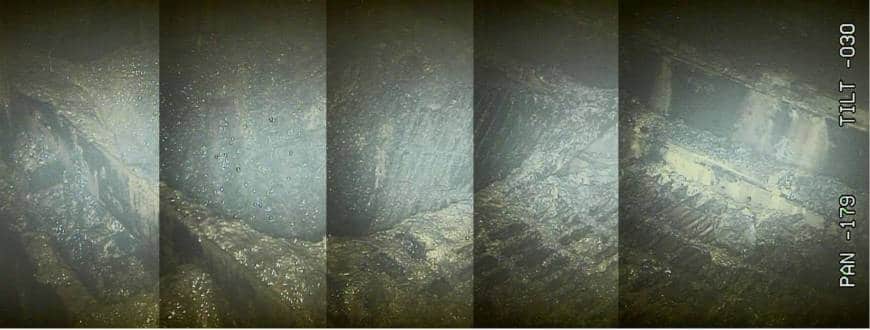
A big hole appeared in the supporting platform at the lower part of the pressurized vessel in reactor unit 2, with a large quantity of what was suspected as nuclear fuel.
In February 2019, TEPCO declared that the investigation had a breakthrough. The robots were able to come in touch with the molten nuclear fuel (fragments of the fuel) that was melted and had fallen into the safety case of the reactor. Their properties such as hardness were determined. TEPCO also stressed on the success in being able to pick up some fuel fragments that looked like small pebbles.
Reactor Unit 3
On July 19, 2017, TEPCO made public for the first time the situation inside reactor unit 3 as photographed by a submersible robot. The robot was 30 centimeters in length and 12 centimeters in width, nicknamed Sunfish. On the second day upon entering the reactor, Sunfish recorded the first sign of the molten uranium fuel rod inside. The underwater photographs taken by the robot showed that reactor unit 3 was seriously damaged, but the molten nuclear fuel was not found.
According to a report published on December 2, 2019, by Fukushima Minho, the plan announced by the government that day for the first time set the completion time: the removal work will start in 2021 and expected to be completed in 2031. Other than reactor unit 4 which has already been cleaned up, units one to three still contain 4,741 portions of nuclear fuel residues, weighing a total of 1,117 tons. After these residues are taken out, they will be placed in common pools in other buildings within the nuclear power plant. Yet the common pools can currently only accept 666 portions of residues.
The estimation is that all the radioactive solid waste and the nuclear residues inside the reactors will reach 770,000 tons by 2030. The government said that a plan will be drawn up by 2028 on sorting, cleaning and storing them.
In today’s era, with supposedly advanced science, human beings are helpless and vulnerable when faced with a nuclear disaster such as Fukushima. The total costs of decommissioning, cleaning and compensation was estimated in 2015 at ¥11 trillion (more than $100 billion). The estimate announced by the Japan Ministry of Economy, Trade, and Industry in December 2016 was ¥22.6 trillion ($220 billion), doubling the previous estimate. The estimate by Japan’s civil think tank Japan Center for Economic Research was as high as ¥50 to ¥70 trillion (about $500 to 700 billion).
The damage of nuclear disasters to human lives, ecology and nature is even worse than a pandemic. And it is not reparable by money.
In August 2013, the Japanese government in conjunction with public and private organizations established the International Research Institute for Nuclear Decommissioning. How long will it take to complete the cleanup work in Fukushima? Senior manager Naoaki Okuzumi stated forthright: “This is a good question, but no one knows the answer. Over human history we have not had this kind of experience. The government believes it will take thirty to forty years. I think that is an optimistic estimation.”
A solution is grim and remote, notwithstanding the promising rhetoric of science and progress.
—March 31, 2020






